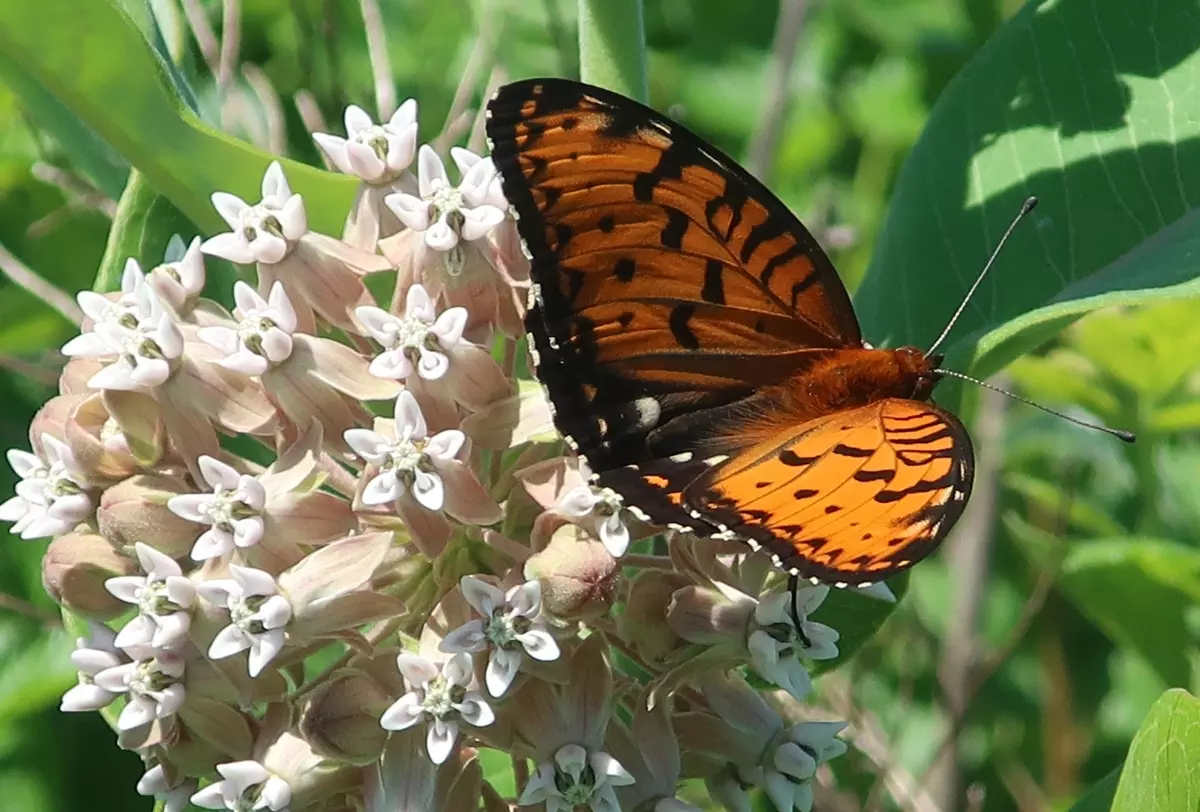12:23
Brief
News Briefs
Federal wildlife officials propose listing butterfly as threatened in Kansas, Missouri
Federal wildlife officials on Monday proposed listing a large butterfly once prevalent in the grasslands of Kansas and Missouri as threatened.
The U.S. Fish and Wildlife Service announced it would seek protections for the regal fritillary, large non-migratory butterfly with orange and black markings. It exists in an eastern and western subspecies.
The service is recommending the western regal fritillary — found in 14 states in the Midwest and Great Plains — be listed as a threatened species. It’s not at immediate risk of extinction, but is suffering from habitat loss because of agricultural and urban development, pesticides and climate change, among other issues.
In its eastern territory, the butterfly could once be found anywhere from New Jersey to North Carolina. Now, it persists in one National Guard installation in Pennsylvania. Federal officials are recommending that the eastern regal fritillary be listed as endangered.
Regal fritillaries dwell primarily in grasslands with native violets, the butterfly’s primary food source. The presence of fritillaries can indicate the health of native prairie as the butterflies rely on “relatively non-degraded” prairie, according to a report accompanying the U.S. Fish and Wildlife Service announcement. The insects can’t survive in agricultural fields, non-native pastures or developed areas around prairie remnants, the report says.
Across its range, the species’ prevalence has declined as much as 99.9%, according to the U.S. Fish and Wildlife Service report.
In Kansas and Missouri, the number of counties with regal fritillaries still in existence has dropped by more than half.
But the Great Plains are a “stronghold” for the butterfly compared to the upper Midwest. The Kansas-Missouri border is “relatively stable” with plenty of regal fritillary populations compared to other parts of the butterfly’s historic range.
While the butterfly isn’t currently endangered in the western stretches of its territory, the wildlife service’s report says it’s “likely to become in danger of extinction within the foreseeable future.”
The service is seeking protections for the species, including prohibiting anyone from importing or exporting; harming, killing or trapping; possessing or transporting; or selling the butterflies.
Wildlife officials proposed an exception to the rule for livestock operations that may unintentionally kill the butterflies, including grazing, controlling weeds, mowing and prescribed burning.
The U.S. Fish and Wildlife Service’s proposal triggers a 60-day public comment period on the proposed listing of the butterfly. Those who wish to provide comments can do so at regulations.gov.
Our stories may be republished online or in print under Creative Commons license CC BY-NC-ND 4.0. We ask that you edit only for style or to shorten, provide proper attribution and link to our website. AP and Getty images may not be republished. Please see our republishing guidelines for use of any other photos and graphics.





